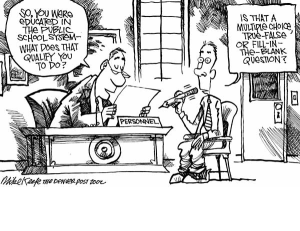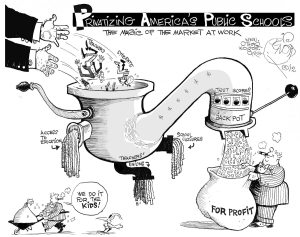NEA BAT Caucus NBI Update
What is an NBI? NBI stands for New Business Item. An NBI is what caucuses and state/local unions can do to set the course of NEA for the coming year.
This is an
approximate list of action taken by NEA on NBI’s that the NEA BAT Caucus got
passed. Some are missing due to the fact
that they may have been bundled, referred, and/or tabled. Some of the missing were policy
amendments. We will list them below this
article.
Please celebrate the
amazing work of the NEA BAT Caucus. Here is an update from the NEA on the NBI's that they worked on and got passed.
12. Monitoring Water
Quality
The NEA will encourage its membership through existing media
to advocate for annual monitoring of their school district’s water quality. NEA Government
Relations will work actively with the EPA to develop national environmental regulations requiring annual
monitoring of water quality in all U.S.
public school districts, with follow-up remediation plans
where needed. NEA will lobby the
Environmental Protection Agency and Members of Congress to develop regulations
for monitoring school districts’ water quality. We will
encourage members to advocate for water
quality monitoring and any proposed legislation using NEA
social media platforms, the Legislative
33. Complaints
against States that Limit Educator Opinions
Using the successful complaint filed by the American Civil
Liberties Union (ACLU) in New Mexico as a model, NEA will collaborate with the ACLU and state member
organizations to file complaints against states that limit or prevent educators from openly and
freely voicing their opinions on Common Core State Standards (CCSS), Next Generation Science Standards,
or other state standards, and/or district/state mandated assessments as these
laws/regulations/codes violate the First Amendment rights of educators. NEA has reviewed the complaint filed by the ACLU in the New
Mexico case and will alert state and local affiliate counsel about the case through the quarterly
NEA E-Letter to lawyers who represent NEA affiliates and/or members. In that alert, NEA will also
offer to partner with state affiliates on similar lawsuits. Finally, NEA will reach out to ACLU New Mexico as
well as the national ACLU office and offer to partner on similar lawsuits.
41. Save Our Schools
March for Public Education and Social Justice
NEA will donate $10,000 to the Save Our Schools March for
Public Education and Social Justice Rally and Activist Conference.
Completed
NEA donated $10,000 to the Save our Schools March.
43. Public Access to
Quality Water Supplies
NEA will engage, collaborate, and partner with organizations
prioritizing the crafting of federal
legislation that will ensure public access to quality water
supplies that meet EPA standards for public
health free of poisons, toxins, and pollutants for all
citizens, regardless of race, income, or zip code.
NEA will work with coalitions and other like-minded
organizations to support and advocate for
legislation that will ensure public access to clean water in
accordance with Environmental Protection
Agency standards.
44. Lead Poisoning
NEA will communicate, through digital media properties, the
dangers of lead poisoning to infant,
toddler and child cognitive development, as well as the
potential genetic effect on future generations
born of our members that are exposed to lead through drinking
water and other means.
NEA has covered this topic extensively on numerous media
properties since the onset of the Flint
water crisis (See, for example,
http://neatoday.org/2016/03/03/flint-water-crisis-educators/).
Additional research and writing related to lead poisoning
has been assigned for a www.NEAToday.org article to run in late 2016 or early 2017.
48. Facts and
Evidence to Support Claims and Policies
NEA will encourage and empower its members to question,
challenge and demand other stakeholders
and themselves to provide facts and evidence to support
their claims, ideas and policies.
NEA is in the process of updating a systematic process to
provide facts and evidence to support claims, ideas and policies. We are also updating tools to assist
members in questioning and challenging, in an appropriate and convincing way, ideas and claims not based
on fact.
55. National Charter
Schools Week
The NEA will petition the President of the United States to
remove the “National Charter Schools Week”designation from the week that has traditionally been
reserved for “Teacher Appreciation Week.” NEA will lobby the White House and key Members of Congress
to remove the “National Charter
Schools Week” designation from the week that has
traditionally been reserved for “Teacher
Appreciation Week.”
58. Experienced
Educators in the Protected Age Category
The NEA will utilize existing resources to publish and
promote a position statement stressing
contributions made by experienced educators in the protected
age category in terms of dedicated
service to students and mentorship to new educational
employees. The statement will cite news
accounts of experienced educational employees being targeted
for harassment and dismissal; will
condemn the discriminatory practices that lead to targeting,
harassment and forced retirements of
members; and will advocate for the support and retention of
experienced educational employees.
NEA is currently researching and collecting the
contributions made by experienced educators and
news accounts of experienced educators targeted for
harassment and dismissal. This research will be
used to inform the position statement. We are also exploring
the best avenue to publish and promote
the position statement.
72. State Labor
Councils
NEA will publicize through existing media the benefits of
joining and encouraging state affiliates to
become members of their state’s labor council.
Completed
NEA president Lily Eskelsen Garcia sent a memo to state
affiliates publicizing the NEA/AFL-CIO Labor Solidarity Partnership, which sets forth the terms and
conditions under which NEA affiliates can participate in AFL-CIO state and/or local labor councils.
The memo highlighted NEA’s belief that labor collaboration and solidarity are important elements in
building a strong labor movement, enhancing the rights and benefits of our members, helping working families
and their communities and promoting social and economic justice for all; and provided a link to
the complete Partnership Agreement detailing the affiliation process (
http://www.nea.org/home/18303.htm).
108. Alternate
Assessments for Students with Disabilities
NEA will compile critical information from state work groups
who are designing alternate assessments for students with disabilities. As states draft plans with
intent to comply with ESSA guidelines and regulations, this information will be posted quarterly on
nea.org. NEA will provide an opportunity for members to comment and respond to this compilation of
information on existing NEA online forums. NEA is working closely with coalition partners and
disability rights groups, i.e., Accountability Systems and Reporting, State Collaborative on Assessment and Student
Standards, Assessing Special Education Students – sponsored by the Council of Chief State School
Officers – and the National Disability Rights Network, as well as NEA’s IDEA Resource Cadre. NEA staff
monitor, provide input and correspond with the U.S. Department of Education in the promulgation of
regulations in concert with the Every Student Succeeds Act on academic assessments, including alternate
assessments. NEA will use existing forms of communication (i.e., edCommunities and
http://getESSAright.org) to share this information as it becomes available.
Here are a list of NBI's that the NEA BAT Caucus worked on that were not listed in the NEA update.
#37 – HB1 impact referred
#42 – Grassroots Activist Award referred
#48 – Truth in Reforms passed as modified
#56 – Letter to Bernie referred
#92- Define Privatization referred
Policy Amendments
C-1 – Charter Definition referred
c-2 – Charter Opposition referred













